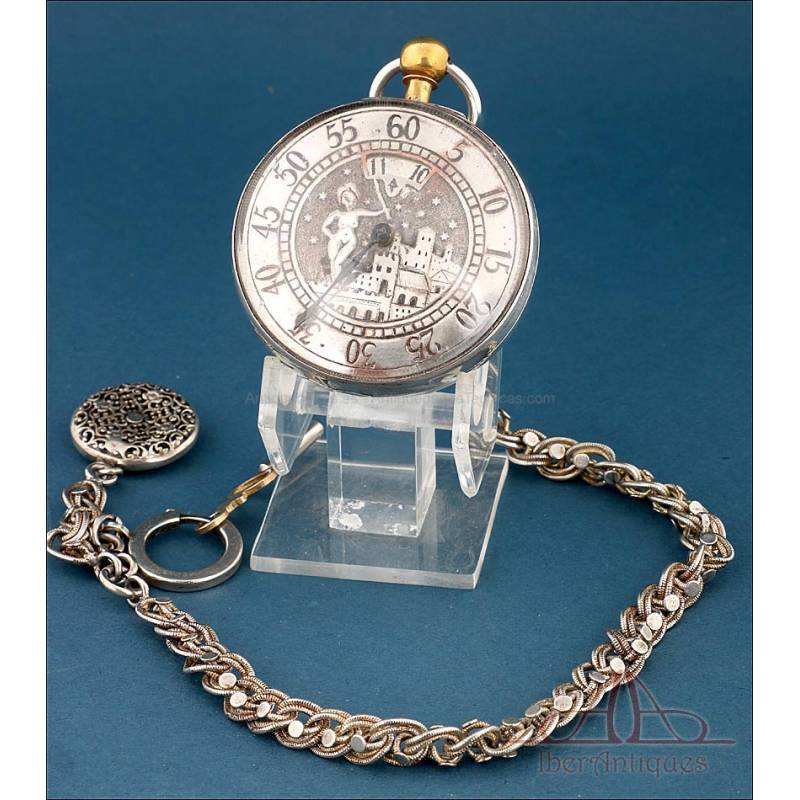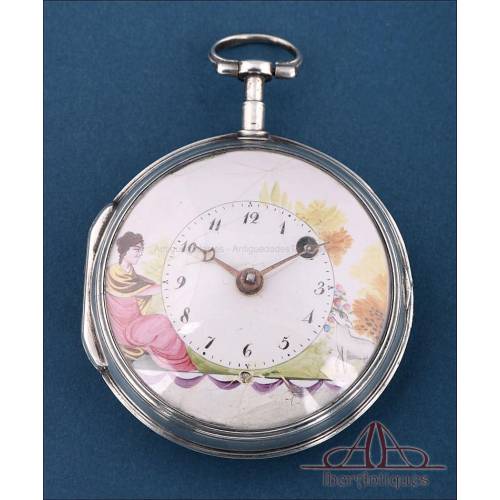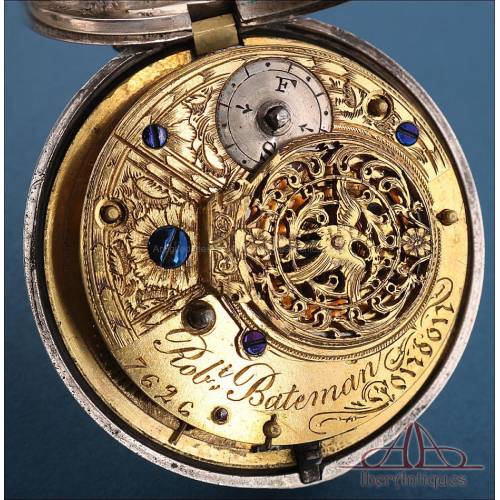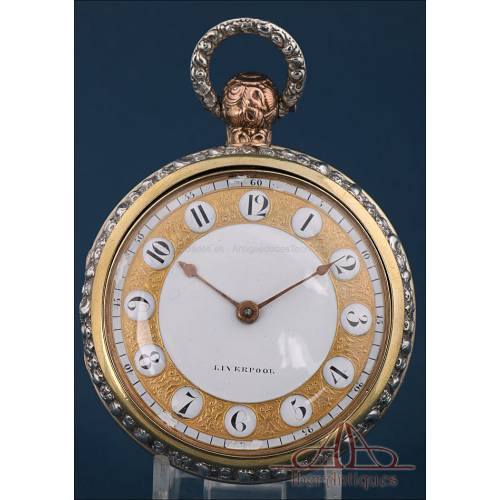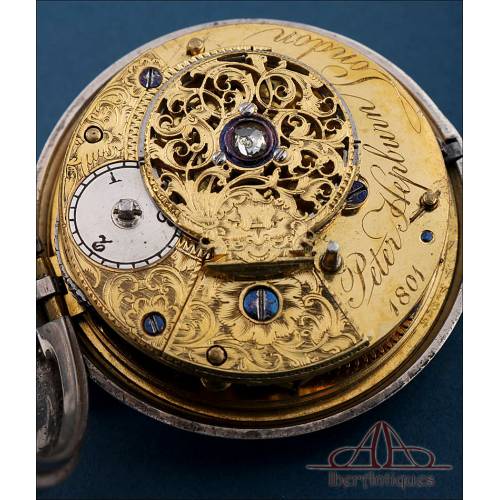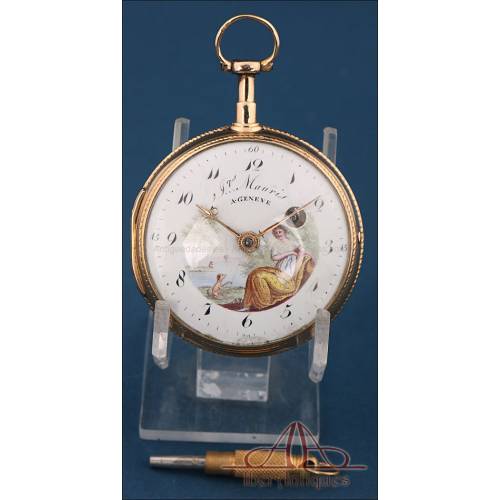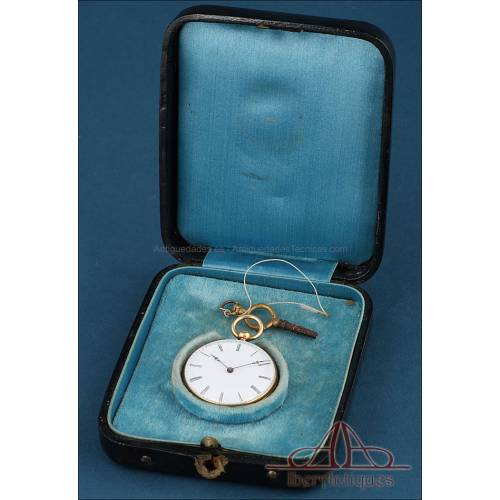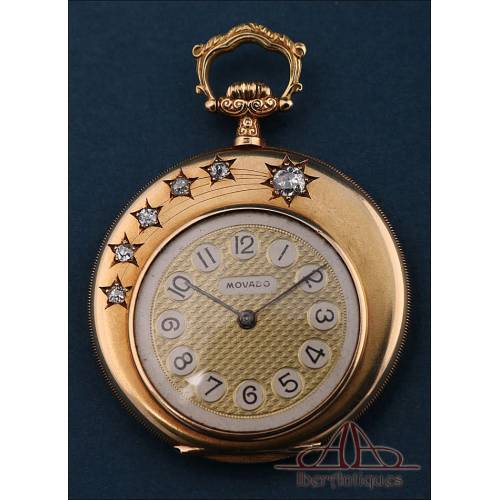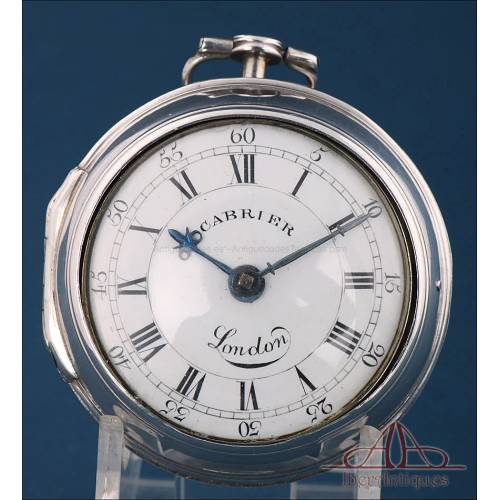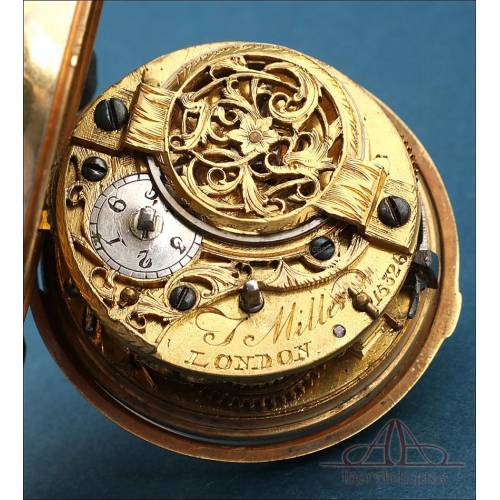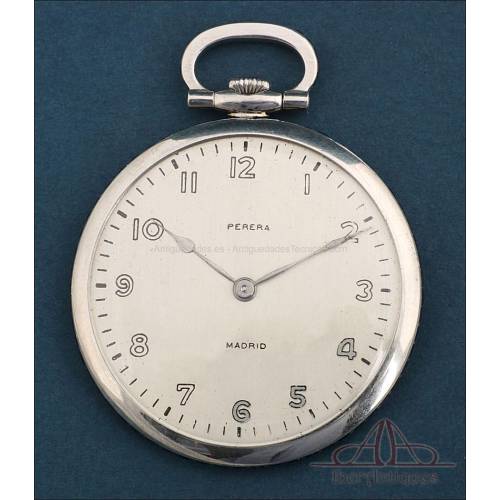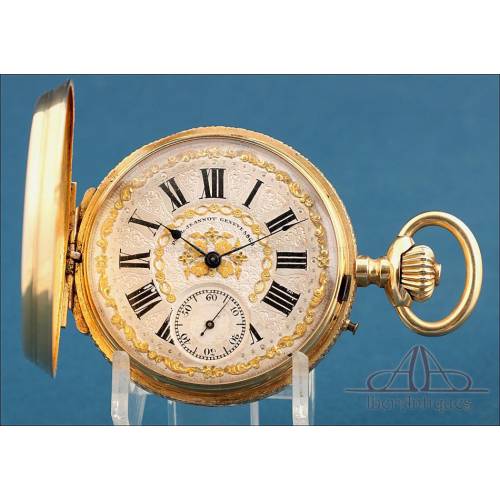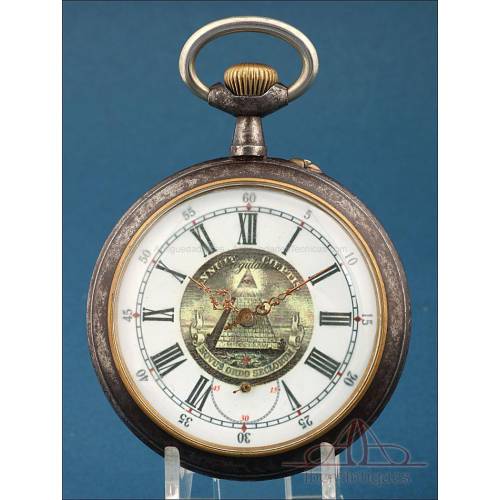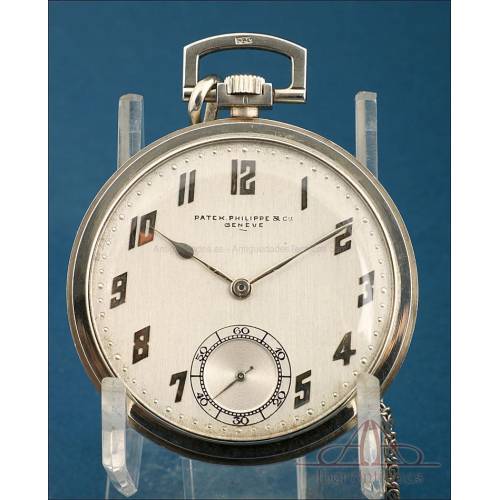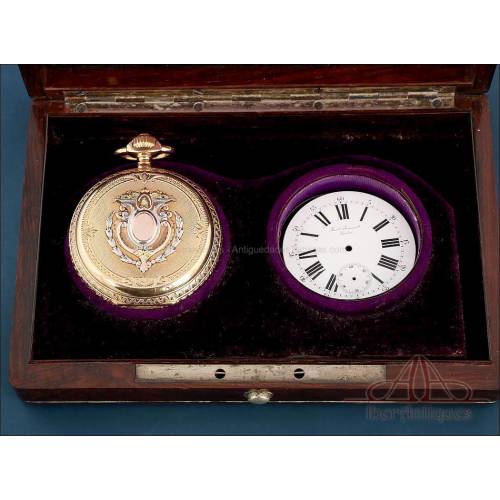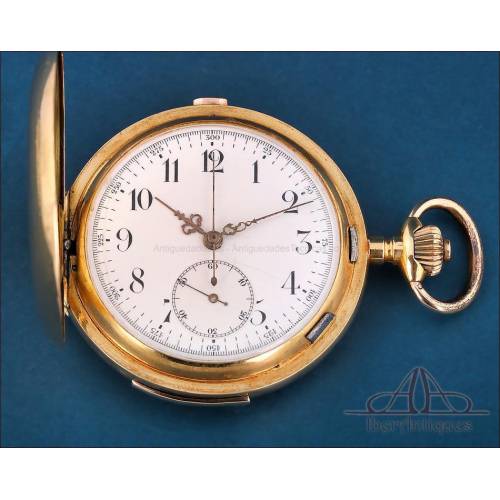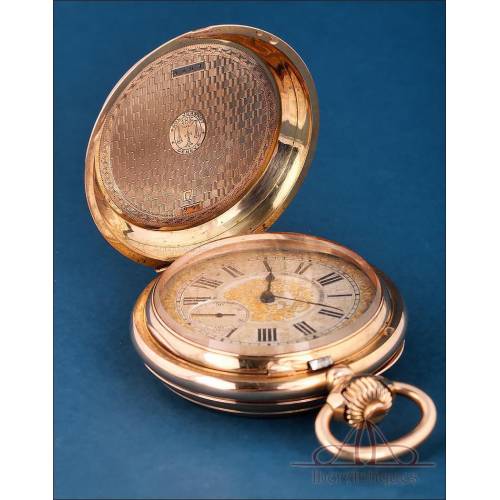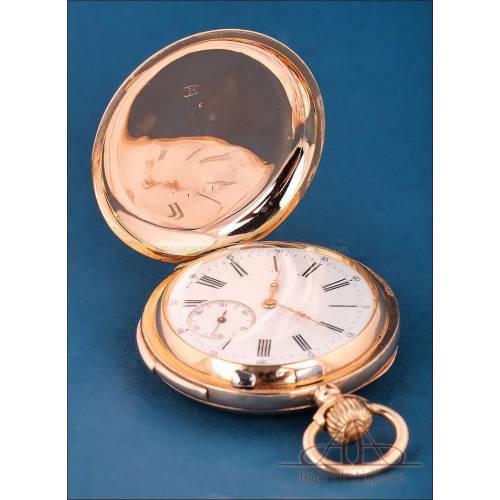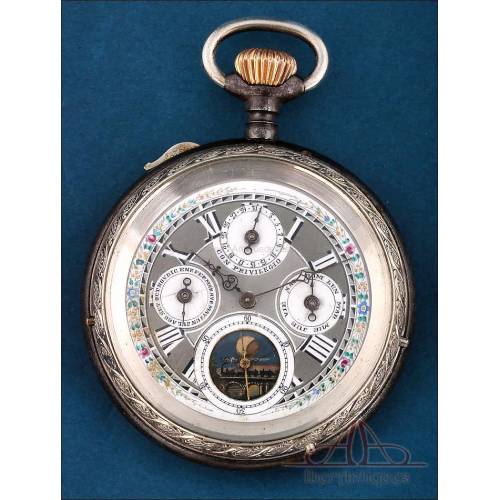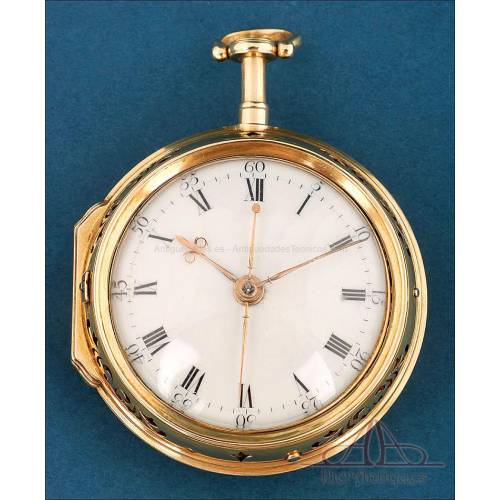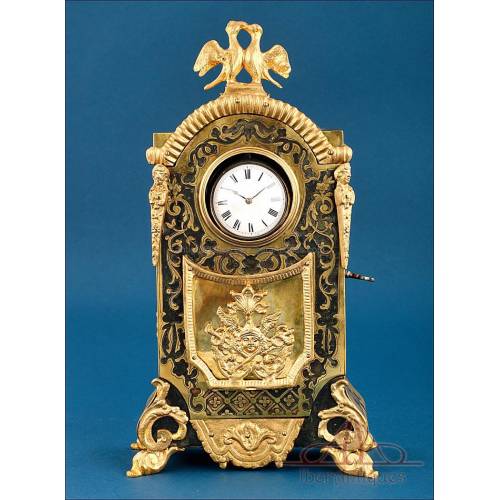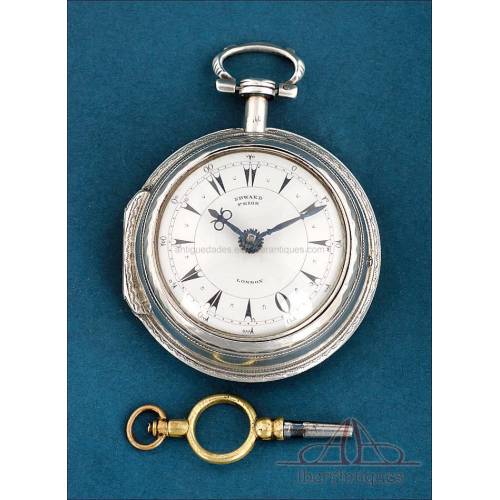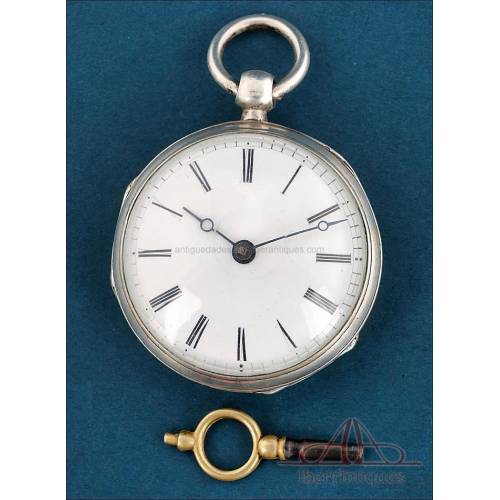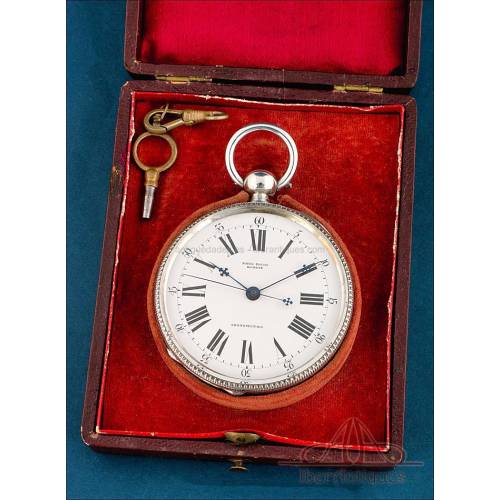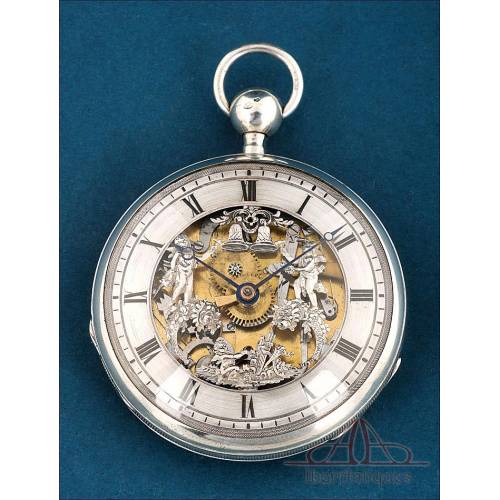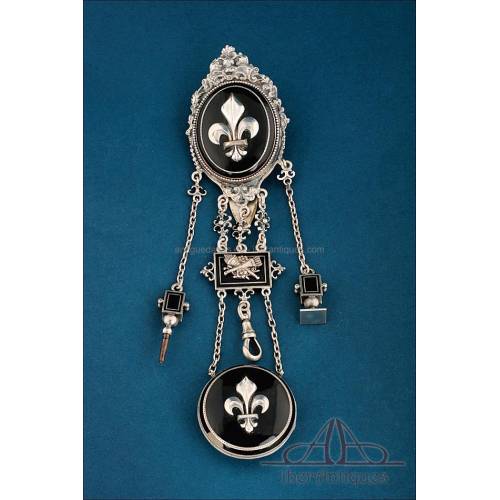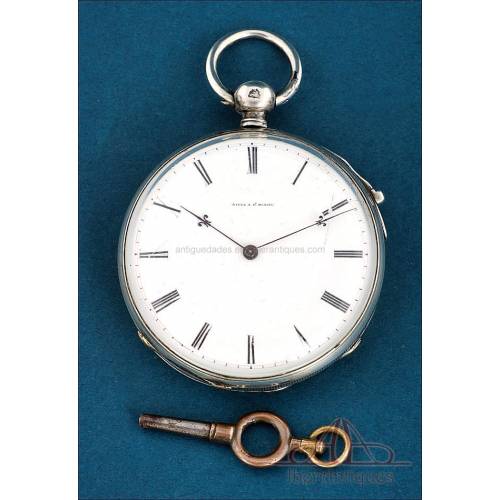E-090
Antique Rare Erotic Verge Fusee Silver Pocket Watch, B. Edmunds, London 1823
Erotic Verge Fusee pocket watch by B. Edmunds, made in London in 1823. Silver case with London hallmarks, silver-plated copper dial with engraved scene. Includes silver chain.
Antique Rare Erotic Verge Fusee Silver Pocket Watch, B. Edmunds, London 1823
This elegant and rare erotic Verge Fusee pocket watch, crafted by B. Edmunds in London in 1823, is a unique collector’s item. Featuring a distinctive time display, this watch shows the hours through a window at the top, while the minutes are displayed by a black enamelled hand that moves over a stunning silver-plated copper dial. The dial is beautifully engraved with an erotic scene of a nude woman set against a cityscape, reflecting the intriguing style of the period.
The watch case is made of silver, marked with London hallmarks from 1823, ensuring its authenticity and age. While there are some areas of wear where the silver plating on the dial has slightly faded, the watch remains in overall excellent condition. Its mechanics are fully functional, and its timeless charm has been well-preserved throughout the centuries. These minor signs of wear only add character and authenticity to this historical gem.
Accompanying the watch is an elegant, thick-link silver chain with sturdy clasps, all in excellent condition. This adds a touch of refinement to the set and is perfect for securing the watch to any outfit, enhancing its timeless appeal.
This rare and collectible piece is perfect for antique watch enthusiasts and anyone passionate about the rich history surrounding such items. With over 200 years of history, it is not only a functional artifact but also a vivid representation of 19th-century horological craftsmanship. This pocket watch would make a magnificent gift for someone special or a fine addition to any antique collection, offering history, style, and elegance.
Dimensions: 50 mm (1.97 in) watch diameter.
Chain: 33 cm (12.99 in).
History of B. Edmunds:
B. Edmunds was a renowned watchmaker based in London during the 19th century, known for his impeccable skill in producing fine and highly precise watches. During the first half of the 19th century, London became one of the leading European centers for horology, competing with the prestigious Swiss workshops. Verge Fusee watches, such as the one presented here, were distinguished by their robust movement and mechanical complexity, often associated with renowned watchmakers like Edmunds. These watches were named after their "Verge Fusee" escapement mechanism, which allowed for greater precision in timekeeping. In this particular watch, crafted in 1823, B. Edmunds utilized a silver case and a silver-plated copper dial, incorporating an engraved design that was also a highly valued art form at the time. These types of watches were symbols of status and prestige in their era, in addition to serving a utilitarian purpose. Today, pieces made by Edmunds are highly prized by collectors, not only for their quality and precision but also for the history they carry, relics of a golden age of London horology.

